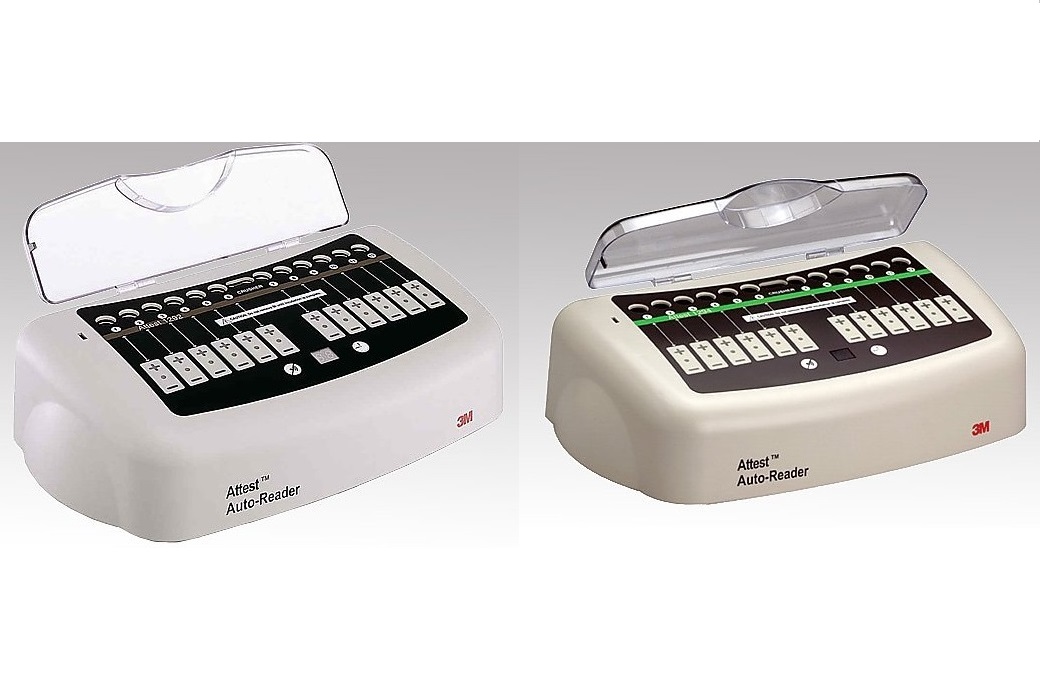

#STERICYCLE SPORE TESTING FULL#
Solid waste options: Gray plastic bins lined with red bag Lab staff retrieve these from storage areas in loading dock Cardboard boxes lined with 2 red bags Red bags provided by custodial NOT for autoclaving Sharps waste options: Disposable sharps containers purchased by labs Placed in either gray bins or boxes when full Removal of waste from labs Request pick up of waste by custodial staff MA regulations require this to be inactivated on site Autoclave Committee on Microbiological Safety (COMS) stipulations that require autoclaving of specific organisms before disposal into a Stericycle biowaste container Rare Still required to go into Stericycle biowaste containers because most autoclaves on campus are not calibrated and validated to meet state requirements Pathological Waste Solid Waste Collected in cardboard boxes specifically labeled “incinerate only” Transported to Stericycle autoclave plant in Woonsocket RI Waste is autoclaved, shredded and compacted Transported to approved Stericycle incineration facility in Haw River, North Carolina NOT the mechanism of disinfection $$$ Transported to North Andover, MA for incineration to generate elecricity Ash is landfilledġ0 Exceptions Risk Group 3 and 4 infectious microorganisms Removes solid waste (not yet inactivated) from campus and performs disinfection and disposal processes off site: autoclaving Incineration shedding/grinding Relies on ability to ship waste via DOT regulationsĬollected in cardboard boxes specifically labeled “incinerate only” Transported to Stericycle autoclave plant in Woonsocket RI Waste is autoclaved, shredded and compacted Transported to approved Stericycle incineration facility in Haw River, North Carolina Transported to North Andover, MA for incineration to generate elecricity Ash is landfilledĬollected in cardboard boxes specifically labeled “incinerate only” Transported to Stericycle autoclave plant in Woonsocket RI Waste is autoclaved, shredded and compacted Transported to approved Stericycle incineration facility in Haw River, North Carolina $$$ Transported to North Andover, MA for incineration to generate elecricity Ash is landfilled How much time would this cost your lab personnel?ĥ Feasibility of other mechanisms of disinfection on our campusĬhemical disinfection Done routinely for liquid waste Addition of bleach to liquid waste followed by disposal down sink Incineration at an approved incineration facility An approved incineration facility is not available on campus Shredding/grinding of sharps Equipment not available on campusĦ The Stericycle option. In order to use autoclaving as the mechanism of inactivation of waste: Every load must be evaluated for proper heating Annual calibration by trained individual Quarterly qualitative biological challenge – spore reduction Document everything and keep records for 3 years. Pathological waste – human and animal tissues and body parts must be incinerated Sharps – must be disinfected and then processed to eliminate the physical hazard Steam disinfection / autoclaving Chemical disinfection Incineration at an approved incineration facility or Any other method approved in writing by the Department. Human parts - (excludes urine, teeth, snot, vomit, fecal materials)ģ MA approved mechanisms of biological waste disinfection

MA state regulation 105 CMR Human blood and materials contaminated with human blood Human parts, tissues, fluids Cultures of infectious agents as well as all labware used with cultures generated in research and clinical laboratories Biotechnology by-product effluents such as cultures and solutions contaminated with microorganisms (including genetically altered) Animal carcasses, body parts, body fluids, blood, bedding Sharps BPHC and NIH Recombinant and synthetic nucleic acids Waste that because of its characteristics may cause, or significantly contribute to, an increase in mortality or an increase in serious irreversible or incapacitating reversible illness or pose a substantial present potential hazard to human health or the environment when improperly treated, stored, transported, disposed of, or otherwise managed. Why so many rules and what does Stericycle have to do with it? Presentation on theme: "Biological Waste from Laboratories"- Presentation transcript:


 0 kommentar(er)
0 kommentar(er)
